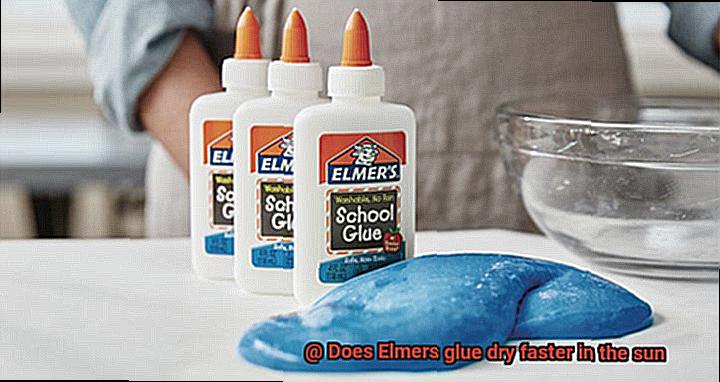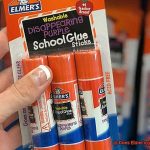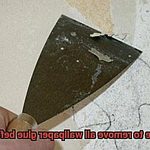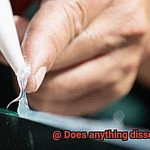Are you tired of waiting for your glue to dry on your latest art project? Do you find yourself daydreaming about the sun magically speeding up the process? Well, wonder no more. We’re here to put that theory to the test and give you the answer you’ve been searching for.
Elmer’s glue is a staple in any DIY enthusiast’s toolkit. From school projects to scrapbooking, it’s versatile and easy to use. But have you ever wondered how it dries or if leaving it out in the sun could speed up the process? We’ve got all the juicy details for you.
In this blog post, we’ll explore the science behind Elmer’s glue and its drying process. We’ll also take a closer look at how temperature and humidity can impact its performance. And of course, we’ll conduct an experiment to determine whether or not our dreams of using the sun as a drying agent are valid.
So, get ready to learn something new and potentially save some time on your next project. Let’s dive into the world of Elmer’s glue and see if we can’t make our crafting lives just a little bit easier.
How Does Elmer’s Glue Dry?
Contents
- 1 How Does Elmer’s Glue Dry?
- 2 Can Sunlight Help Speed Up the Drying Process?
- 3 What Are the Benefits of Using Sunlight to Dry Elmer’s Glue?
- 4 What Are the Potential Issues with Using Sunlight to Dry Elmer’s Glue?
- 5 How Can You Safely Use Sunlight to Dry Elmer’s Glue?
- 6 Tips for Best Results When Drying Elmer’s Glue in the Sun
- 7 Alternatives to Using Sunlight to Dry Elmer’s Glue
- 8 Conclusion
The process is fascinating. Elmer’s glue is made up of a mixture of water, polyvinyl acetate (PVA), and other chemicals. When the glue is applied to a surface, the water in the glue begins to evaporate, leaving behind a thin layer of PVA.
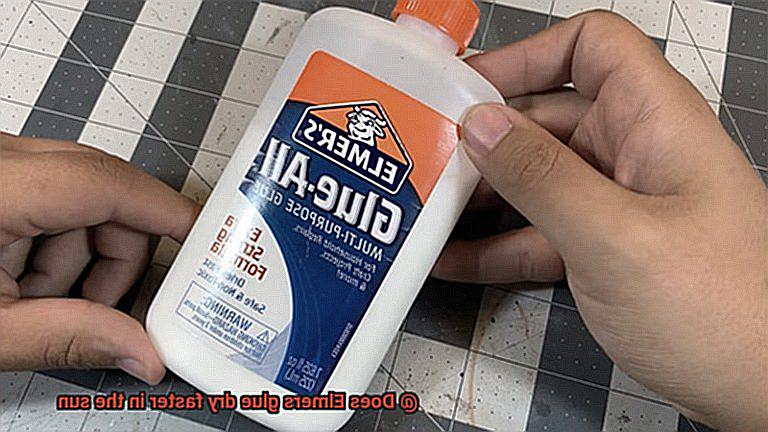
As the water continues to evaporate, the PVA starts to cross-link with other PVA molecules, creating a strong bond between the two surfaces. This process is called curing and continues until all of the water has evaporated. So, in essence, Elmer’s glue dries through the magical combination of evaporation and curing.
The speed at which Elmer’s glue dries depends on various factors such as temperature, humidity, thickness of the glue layer, and type of surface it is applied to. In general, warmer and drier environments will speed up the drying process. However, if it’s too hot outside, it may also cause the glue to crack or shrink.
Many people are curious if exposing Elmer’s glue to sunlight can speed up the drying process. The answer is yes. Sunlight provides heat and can accelerate water evaporation in the glue, reducing its drying time.
But there are some important things to keep in mind when using sunlight to dry Elmer’s glue. UV radiation from sunlight can cause discoloration or fading of certain types of paper or materials that have been glued together with Elmer’s glue. Additionally, too much exposure to sunlight can cause cracking or shrinking of the glue.
To avoid these issues, it’s best to monitor your glued objects closely for signs of cracking or discoloration when using sunlight to dry Elmer’s glue. Avoid prolonged exposure to direct sunlight if possible and use caution when exposing the glue to UV radiation.
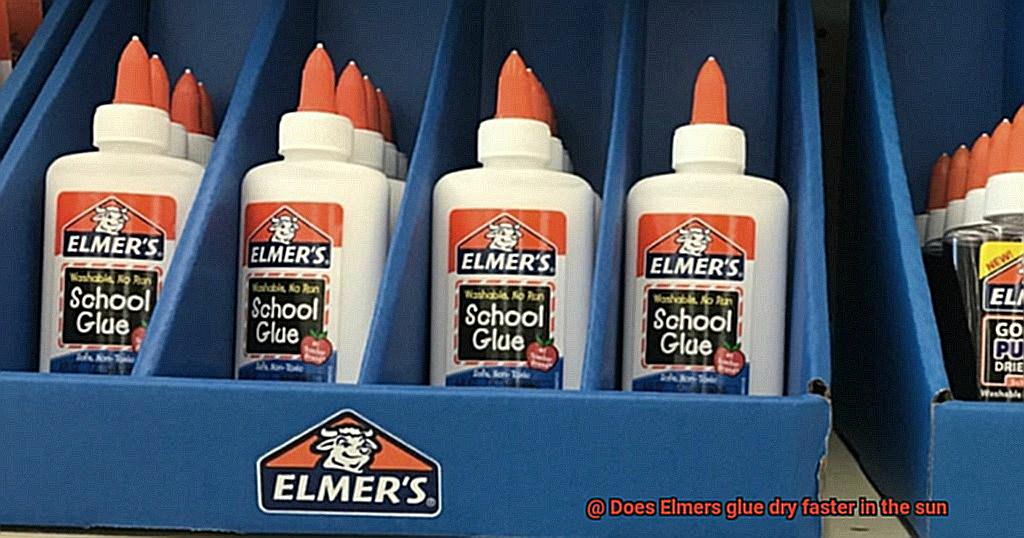
Can Sunlight Help Speed Up the Drying Process?
Sunlight can accelerate the drying process of Elmer’s glue by breaking down its chemical bonds with ultraviolet (UV) light. This causes cross-linking, making the polymer chains within the glue more tightly linked together and resulting in a stronger adhesive bond.
However, not all types of Elmer’s glue will dry faster in sunlight. Washable school glue may not be as affected by UV light as other varieties. Additionally, overexposure to sunlight can lead to unwanted discoloration or yellowing of the glue, which may not be ideal for certain projects.
It’s important to note that relying solely on sunlight may not always be the most efficient method for drying your glue. Factors such as temperature, humidity, and air circulation can all impact drying time. To ensure a quick and thorough drying process, consider using other techniques in addition to sunlight. You could use a fan or dehumidifier to improve air circulation or apply heat with a hairdryer or heat gun.
What Are the Benefits of Using Sunlight to Dry Elmer’s Glue?

Using sunlight to dry Elmer’s glue can have many benefits that make it a fantastic option for your crafting needs.
The first benefit of using sunlight to dry Elmer’s glue is the speedy drying process. The heat from the sun can accelerate the evaporation of the water in the glue, resulting in a faster drying time. This is especially useful if you’re working on a project with a tight deadline or children who are eager to see the finished product.
Another advantage to this method is the stronger bond it creates. When glue is exposed to heat, it activates the curing process, resulting in a more robust adhesive between surfaces. This makes it an excellent option for projects that require durability and strength.
Using sunlight to dry Elmer’s glue is also an eco-friendly and cost-effective choice. Since you’re not using any additional energy sources, you’re reducing your carbon footprint and doing your part for the environment. Plus, it doesn’t require any special equipment or tools, which can save you money in the long run.
However, excessive exposure to sunlight can cause the glue to become brittle and crack over time. Therefore, it’s best to use this method sparingly and only when needed. It’s also essential to keep in mind that sunlight may not always be available or practical in all situations. So, alternative drying methods should be considered as well.
What Are the Potential Issues with Using Sunlight to Dry Elmer’s Glue?
When it comes to drying Elmer’s glue, sunlight may seem like a convenient and efficient option. But before you head outside with your project, it’s important to consider the potential issues that can arise from this method.
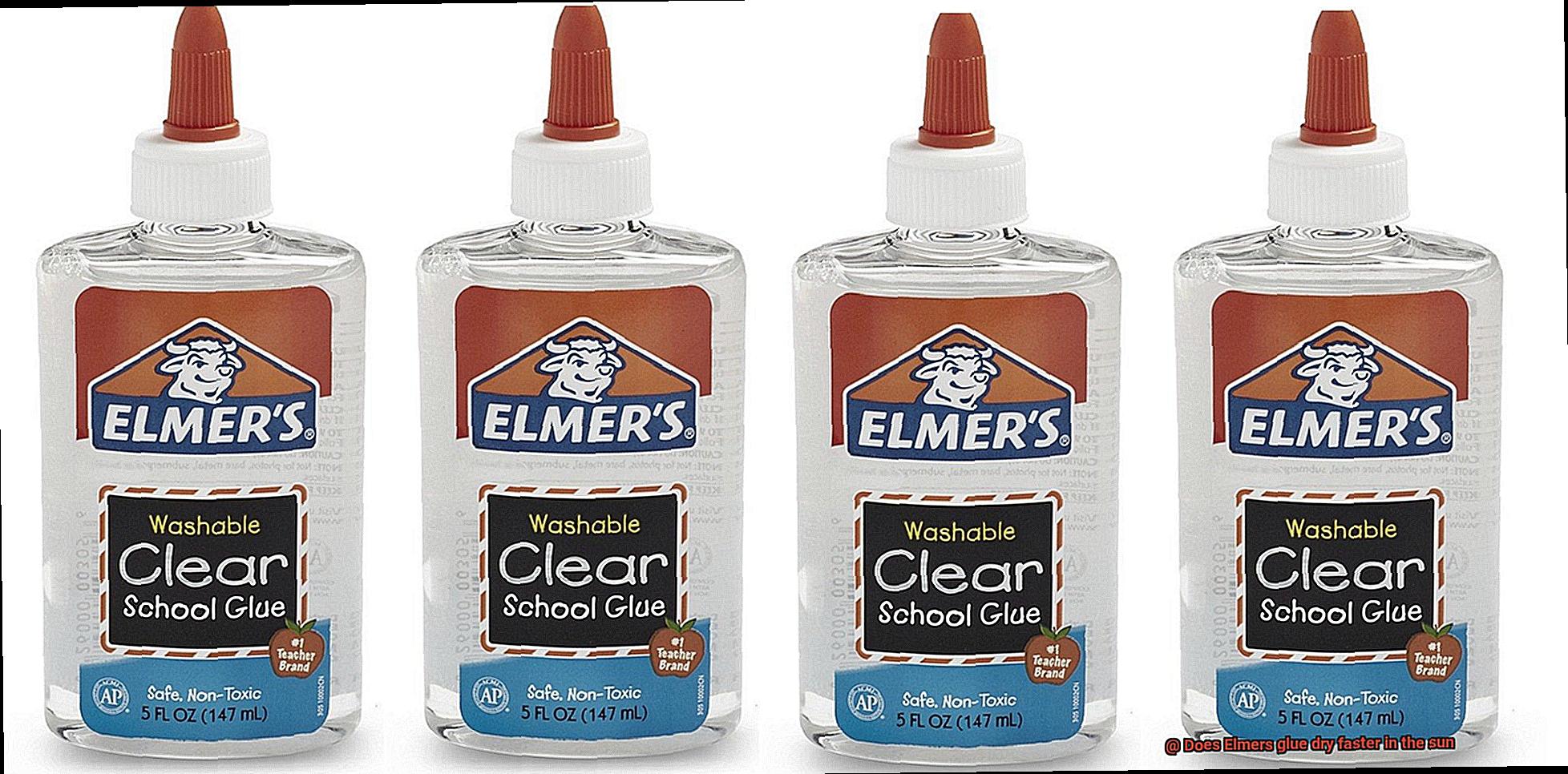
One of the main concerns is the inconsistency of sunlight. Depending on the time of day, weather conditions, and location, the strength and intensity of sunlight can vary greatly. This means that the drying time for Elmer’s glue may also vary, resulting in uneven bonding and possible damage to the project.
Prolonged exposure to sunlight can cause another issue – the glue can break down and weaken over time. This is especially true for outdoor projects that are constantly exposed to sunlight and other environmental factors. The UV rays in sunlight can cause the glue to become brittle, eventually cracking or breaking apart.
In addition, using sunlight as a drying method can result in discoloration or fading. Sunlight can cause some materials, including certain types of paper or fabric, to fade or change color over time. This can be particularly problematic for crafts or art projects that require a specific color scheme or design.
It’s also important to note that not all types of Elmer’s glue are suitable for drying in the sun. Some formulations may require specific temperature ranges or humidity levels to properly dry and bond materials together. Sunlight alone may not provide these optimal conditions, resulting in a weaker bond or even failure of the project.
How Can You Safely Use Sunlight to Dry Elmer’s Glue?
Well, before you take your project outside, there are some important things to keep in mind to ensure a successful outcome.
First and foremost, it’s essential to remember that Elmer’s glue needs moisture to dry properly. Therefore, if you live in a humid area or it’s a particularly damp day, using sunlight to dry Elmer’s glue may not be the best option. This is because the humidity can prevent the glue from drying correctly, leaving your project sticky and potentially ruining your hard work.
Assuming you’re working in a relatively dry environment, the next step is to find a spot with direct sunlight. Look for an area where the glue will receive as much sunlight exposure as possible. It’s also important to choose a sheltered spot that’s protected from wind and debris. If debris gets stuck in the glue while it’s drying, it can negatively affect its overall strength and drying time.
Once you’ve found the perfect spot, apply the glue as usual and allow it to dry for a few minutes indoors before moving it into the sunlight. Make sure all sides of the glued object are exposed to the sun, so it dries evenly and quickly.
It’s crucial to remember that while sunlight can speed up the drying process, it can also cause the glue to become brittle and yellow over time. To avoid this, try not to leave your glued object in direct sunlight for extended periods of time. Instead, move it back into a shaded area once it’s mostly dry and allow it to finish drying indoors.
In summary, using sunlight to dry Elmer’s glue can be a safe and effective method as long as you consider humidity levels and exposure time. Here are some key takeaways to keep in mind:
- Check the humidity levels before using sunlight to dry Elmer’s glue
- Find a sheltered spot with direct sunlight exposure
- Allow the glue to dry for a few minutes indoors before moving it into the sunlight
- Make sure all sides of the glued object are exposed to the sun
- Move the glued object back into a shaded area once it’s mostly dry to avoid brittleness and yellowing
Tips for Best Results When Drying Elmer’s Glue in the Sun
Drying it in the sun can be a game-changer, but there are some tips to keep in mind to achieve the best results. Here are five sub-sections to help you dry Elmer’s glue in the sun like a pro:
Apply Thin and Even Layers
When applying Elmer’s glue, make sure to use thin and even layers. Thick layers will take longer to dry, even when exposed to sunlight. Furthermore, thicker layers of glue can cause lumps and bumps that can ruin your finished product. Make sure to apply the glue evenly for faster drying times and smoother finishes.
Choose the Right Surface
The surface you choose to dry your glue on is crucial. You want a flat surface such as cardboard or paper that allows for even drying and prevents any pooling or uneven areas. Before applying any glue, make sure that the surface is clean and free of debris.
Direct Sunlight is Key
Place your glue in direct sunlight to speed up the drying process. The sun’s heat and UV rays will help evaporate the water in the glue more quickly, reducing overall drying time. It’s best to leave it outside for at least an hour or two but keep an eye on it so that it doesn’t become too hot or start to bubble.
Monitor Temperature and Humidity Levels
Temperature and humidity levels play a significant role in drying Elmer’s glue in the sun. If it’s too hot or too humid, it may cause the glue to dry too quickly or not at all. It’s best to avoid extreme temperatures and humidity levels when drying your glue in the sun.
Check on Your Glue Periodically

While your glue is drying in the sun, check on it periodically. If you notice any inconsistencies or bumps forming, gently press down on them with a clean finger or a small tool to smooth them out before the glue dries completely. This will ensure that your finished product has a smooth and even surface.
Alternatives to Using Sunlight to Dry Elmer’s Glue
As a seasoned crafter, you know that sunlight isn’t the only way to dry Elmer’s glue. There are several alternatives that can help speed up the process, and I’m here to share them with you.
Fan it Out
A fan is one of the most popular options for drying glue. The air circulation helps to dry the glue faster, and you can adjust the fan speed according to your needs. Whether it’s a ceiling fan or a handheld one, it’s an effective and easy solution.
Blow-dry It
If you’re working on small projects or need quick results, a hairdryer on low heat can do the trick. However, make sure you don’t hold it too close to the glue to prevent bubbling or cracking.
Dehumidify It
Living in a humid area can prolong the drying process, but a dehumidifier can help remove moisture from the air and create an ideal environment for the glue to dry quicker.
Warm Room with Ventilation
If you don’t have access to a fan or dehumidifier, placing your project in a warm room with good ventilation can also help speed up the drying process.
Mix It Up
To accelerate the drying process even further, you can mix your Elmer’s glue with other materials that help it dry faster. Baking soda and cornstarch are great examples, but keep in mind that this may alter your glue’s properties and affect its strength.
Conclusion
In summary, Elmer’s glue is a highly versatile adhesive that can be utilized for a wide range of DIY projects. The drying process involves both evaporation and curing, which can be influenced by multiple factors such as temperature, humidity, thickness of the glue layer, and surface type. Sunlight exposure does indeed accelerate the drying process by hastening water evaporation in the glue and breaking down its chemical bonds with ultraviolet light.
However, relying solely on sunlight may not always yield optimal results due to potential issues such as inconsistent sunlight exposure, discoloration or fading of certain materials, and brittleness or cracking over time. Therefore, it’s crucial to monitor your glued objects closely and consider alternative drying methods like using a fan or dehumidifier.
To attain the best outcomes when drying Elmer’s glue in the sun, apply thin and even layers on a flat surface that allows for uniform drying. Place your glue in direct sunlight while keeping an eye on temperature and humidity levels. Check on your glue periodically and utilize alternatives if necessary.
Ultimately, whether you opt for sunlight or other techniques to dry your Elmer’s glue, it’s essential to take all factors into account to ensure success for your project.

